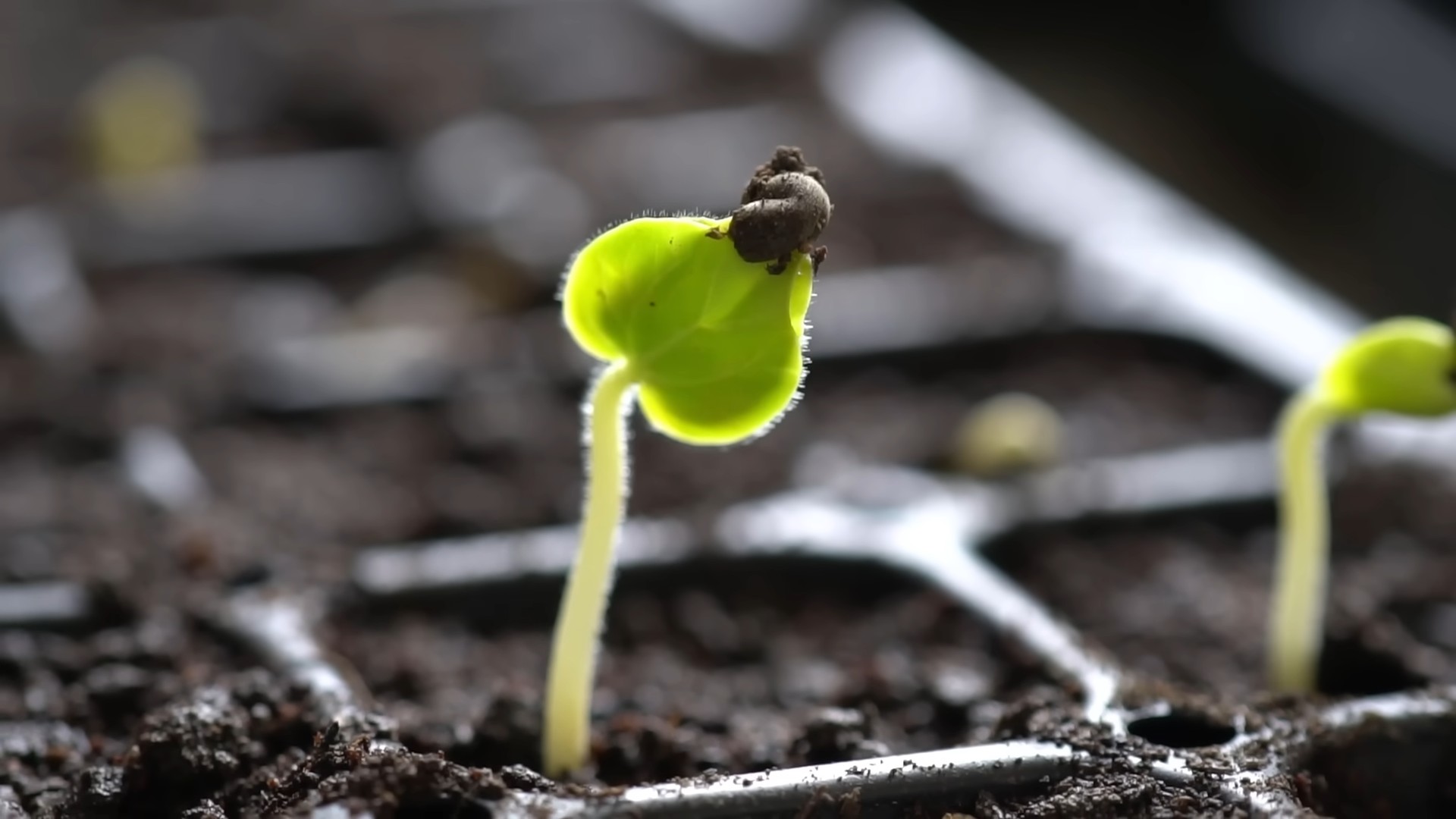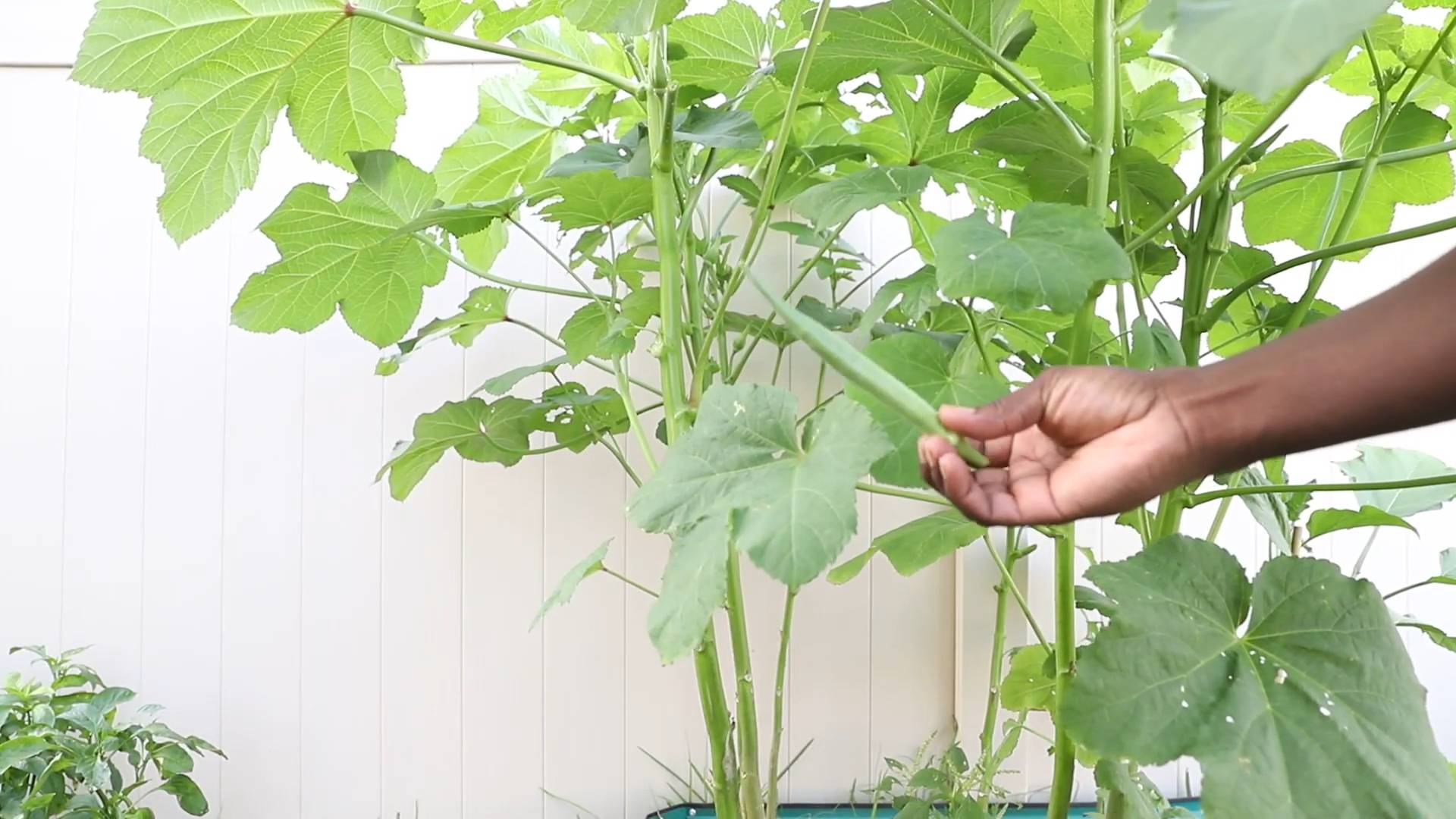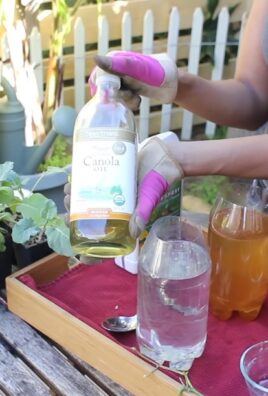Growing Okra at Home might seem daunting, but trust me, it’s more rewarding than you think! Imagine stepping into your backyard and harvesting fresh, vibrant okra pods, ready to be transformed into a delicious gumbo or a crispy, Southern-fried delight. Forget those bland, overpriced vegetables from the grocery store; with a few simple tricks, you can cultivate your own okra bounty right in your backyard.
Okra, also known as “lady’s fingers,” has a rich history, tracing back to ancient Ethiopia and Egypt. It traveled across continents, becoming a staple in Southern cuisine and a symbol of resilience and resourcefulness. For generations, home gardeners have relied on time-tested techniques to coax the best out of their okra plants.
Why should you bother with this DIY project? Well, for starters, homegrown okra tastes infinitely better! Plus, you control the growing process, ensuring your vegetables are free from harmful pesticides and chemicals. But more importantly, growing okra at home is incredibly satisfying. It’s a chance to connect with nature, learn new skills, and enjoy the fruits (or rather, the pods!) of your labor. This article will provide you with easy-to-follow DIY tricks and hacks that will help you to grow okra like a pro, even if you’re a complete beginner. So, grab your gardening gloves, and let’s get started!

Growing Okra at Home: A Beginner’s Guide to Bountiful Harvests
Hey there, fellow gardening enthusiasts! I’m so excited to share my experiences and tips on growing okra at home. Okra, also known as “lady’s fingers,” is a warm-season vegetable that’s not only delicious but also packed with nutrients. Plus, its beautiful flowers add a touch of elegance to any garden. If you’re looking for a relatively easy-to-grow vegetable that yields a generous harvest, okra is definitely worth considering. Let’s dive in!
Choosing the Right Okra Variety
Before we get our hands dirty, it’s important to choose the right okra variety for your climate and preferences. Here are a few popular options:
* Clemson Spineless: This is a classic and widely grown variety known for its smooth, spineless pods, making harvesting a breeze. It’s a reliable choice for most gardens.
* Burgundy: If you’re looking for something a little different, Burgundy okra boasts beautiful red pods that add a pop of color to your garden and your plate.
* Emerald: This variety produces long, slender, and dark green pods. It’s known for its excellent flavor and tenderness.
* Dwarf Green Long Pod: Perfect for smaller gardens or containers, this variety produces shorter plants with good yields.
Preparing Your Garden for Okra
Okra thrives in warm weather and needs plenty of sunlight. Here’s how to prepare your garden for a successful okra crop:
* Sunlight: Okra needs at least 6-8 hours of direct sunlight per day. Choose a location in your garden that receives ample sunlight throughout the day.
* Soil: Okra prefers well-drained soil that is rich in organic matter. Amend your soil with compost or well-rotted manure to improve its fertility and drainage. A slightly acidic to neutral soil pH (6.0-7.0) is ideal.
* Spacing: Okra plants can grow quite tall, so give them enough space to spread out. Space your plants 12-18 inches apart in rows that are 3-4 feet apart. This will allow for good air circulation and prevent overcrowding.
* Timing: Okra is a warm-season crop and should be planted after the last frost when the soil has warmed up to at least 65°F (18°C). In cooler climates, you can start seeds indoors 4-6 weeks before the last frost.
Step-by-Step Guide to Planting Okra
Now for the fun part – planting! Here’s a step-by-step guide to get your okra plants off to a great start:
1. Soaking the Seeds (Optional): Okra seeds have a hard outer shell, so soaking them in water for 12-24 hours before planting can help improve germination rates. I usually skip this step, but if you’re having trouble with germination, it’s worth a try.
2. Direct Sowing: This is my preferred method, as okra doesn’t always transplant well.
* **Step 1: Prepare the Soil:** Rake the soil smooth and remove any rocks or debris.
* **Step 2: Dig Holes:** Dig holes about 1 inch deep and space them 12-18 inches apart.
* **Step 3: Plant Seeds:** Place 2-3 seeds in each hole. This ensures that at least one seed will germinate.
* **Step 4: Cover and Water:** Cover the seeds with soil and gently water the area. Keep the soil consistently moist until the seeds germinate.
3. Starting Seeds Indoors (If Necessary): If you live in a cooler climate, you can start okra seeds indoors.
* **Step 1: Sow Seeds:** Sow seeds in peat pots or biodegradable containers filled with seed-starting mix. Plant 2-3 seeds per pot.
* **Step 2: Provide Warmth and Light:** Keep the soil moist and provide warmth (around 75-85°F or 24-29°C). Use a heat mat if necessary. Place the seedlings under grow lights or in a sunny window.
* **Step 3: Harden Off Seedlings:** Once the seedlings have developed a few true leaves, gradually acclimate them to outdoor conditions by exposing them to increasing amounts of sunlight and wind over a period of 7-10 days.
* **Step 4: Transplant Seedlings:** Transplant the seedlings into your garden after the last frost, spacing them 12-18 inches apart. Be careful not to disturb the roots too much during transplanting.
Caring for Your Okra Plants
Once your okra plants are established, it’s important to provide them with the care they need to thrive.
* Watering: Okra needs consistent watering, especially during hot, dry weather. Water deeply at the base of the plants, avoiding wetting the foliage, which can lead to fungal diseases. Aim for about 1 inch of water per week.
* Fertilizing: Okra is a heavy feeder and benefits from regular fertilization. Apply a balanced fertilizer (e.g., 10-10-10) every 4-6 weeks. You can also side-dress your plants with compost or well-rotted manure.
* Weeding: Keep your garden free of weeds, which can compete with your okra plants for nutrients and water. Hand-pull weeds or use a hoe to remove them. Mulching around your plants can also help suppress weed growth.
* Pest Control: Okra can be susceptible to certain pests, such as aphids, flea beetles, and corn earworms. Inspect your plants regularly for signs of infestation.
* Aphids: These tiny insects suck sap from plants and can cause stunted growth. You can control aphids by spraying them with a strong stream of water or by using insecticidal soap.
* Flea Beetles: These small beetles chew holes in the leaves of okra plants. You can control flea beetles by using row covers or by spraying them with neem oil.
* Corn Earworms: These caterpillars can bore into okra pods and damage the crop. You can control corn earworms by hand-picking them off the plants or by using Bacillus thuringiensis (Bt), a natural insecticide.
* Pruning: While not essential, pruning can help improve air circulation and encourage bushier growth. Remove any yellowing or damaged leaves. You can also pinch off the top of the plant to encourage side branching.
Harvesting Your Okra
Harvesting okra at the right time is crucial for ensuring tender and flavorful pods.
* Timing: Okra pods are typically ready to harvest 50-65 days after planting. Harvest the pods when they are 2-4 inches long and still tender. Overripe pods become tough and fibrous.
* Frequency: Harvest okra pods every 1-2 days, as they grow quickly. Regular harvesting encourages the plant to produce more pods.
* Method: Use a sharp knife or pruning shears to cut the pods from the plant. Be careful not to damage the plant. Wear gloves when harvesting okra, as some varieties have prickly hairs that can irritate the skin.
* Handling: Okra pods are delicate and bruise easily. Handle them gently and store them in the refrigerator for up to a week.
Dealing with Common Okra Problems
Even with the best care, you may encounter some problems while growing okra. Here are a few common issues and how to address them:
* Yellowing Leaves: Yellowing leaves can be caused by a variety of factors, including nutrient deficiencies, overwatering, or pest infestations. Check the soil pH and nutrient levels. Ensure that the soil is well-drained and that the plants are not being overwatered. Inspect the plants for pests and treat accordingly.
* Stunted Growth: Stunted growth can be caused by poor soil, lack of sunlight, or pest infestations. Amend the soil with compost or well-rotted manure. Ensure that the plants are receiving at least 6-8 hours of direct sunlight per day. Inspect the plants for pests and treat accordingly.
* Lack of Pod Production: Lack of pod production can be caused by insufficient pollination, high temperatures, or nutrient deficiencies. Ensure that there are plenty of pollinators in your garden. Water the plants regularly during hot weather. Fertilize the plants with a balanced fertilizer.
Enjoying Your Okra Harvest
Now that you’ve harvested your okra, it’s time to enjoy the fruits (or rather, vegetables) of your labor! Okra can be used in a variety of dishes, including:
* Fried Okra: A classic Southern dish that’s crispy on the outside and tender on the inside.
* Okra Gumbo: A flavorful stew that’s perfect for a chilly evening.
* Roasted Okra: A simple and healthy way to enjoy okra.
* Pickled Okra: A tangy and delicious condiment.
I hope this guide has

Conclusion
So, there you have it! Growing okra at home is not only achievable, but it’s also a deeply rewarding experience that connects you to the food you eat. From the satisfaction of nurturing a tiny seed into a thriving plant to the joy of harvesting your own fresh, vibrant pods, the benefits are numerous. We’ve walked you through the essential steps, from selecting the right variety and preparing your soil to providing consistent care and harvesting at the peak of ripeness.
But why is this DIY trick a must-try? Simply put, homegrown okra tastes better. It’s fresher, more tender, and bursting with flavor that you just can’t find in store-bought varieties. Plus, you have complete control over the growing process, ensuring that your okra is free from harmful pesticides and chemicals. You’re not just growing food; you’re cultivating a healthier lifestyle.
Beyond the basic method, there’s plenty of room for experimentation and personalization. Consider these variations to tailor your okra-growing experience:
* Companion Planting: Enhance your okra’s growth by planting it alongside beneficial companions like basil, thyme, or marigolds. These plants can help deter pests and attract pollinators, creating a thriving ecosystem in your garden.
* Container Gardening: If you’re short on space, don’t despair! Okra can thrive in large containers, making it perfect for patios, balconies, or small gardens. Just be sure to choose a pot that’s at least 15-20 gallons in size and provide adequate drainage.
* Heirloom Varieties: Explore the fascinating world of heirloom okra varieties. These unique cultivars offer a range of colors, shapes, and flavors, adding diversity and intrigue to your garden. Some popular choices include ‘Red Burgundy,’ ‘Clemson Spineless,’ and ‘Emerald.’
* Succession Planting: Extend your okra harvest by planting seeds every few weeks. This ensures a continuous supply of fresh pods throughout the growing season.
Growing okra at home is more than just a gardening project; it’s an opportunity to connect with nature, learn new skills, and enjoy the delicious rewards of your labor. Don’t be intimidated by the process – okra is a relatively easy plant to grow, even for beginners. With a little patience and attention, you’ll be harvesting your own bountiful crop in no time.
We wholeheartedly encourage you to give this DIY trick a try. Start small, learn as you go, and don’t be afraid to experiment. And most importantly, share your experience with us! We’d love to hear about your successes, challenges, and favorite okra recipes. Post photos of your garden, share your tips, and connect with fellow okra enthusiasts in the comments below. Let’s build a community of passionate gardeners who are dedicated to growing their own delicious and nutritious food. Happy growing!
Frequently Asked Questions (FAQ)
What is the best time of year to plant okra?
Okra thrives in warm weather, so the best time to plant it is in late spring or early summer, after the last frost. The soil temperature should be at least 65 degrees Fahrenheit for optimal germination. In warmer climates, you can even plant okra in early fall for a second harvest. Check your local frost dates to determine the ideal planting time for your region.
How much sunlight does okra need?
Okra requires at least 6-8 hours of direct sunlight per day to grow and produce well. Choose a planting location that receives plenty of sunshine throughout the day. If you’re growing okra in containers, make sure to place them in a sunny spot. Insufficient sunlight can lead to leggy plants and reduced pod production.
How often should I water my okra plants?
Okra needs consistent moisture, especially during hot weather. Water deeply and regularly, aiming to keep the soil consistently moist but not waterlogged. A good rule of thumb is to water when the top inch of soil feels dry to the touch. Mulching around the plants can help retain moisture and suppress weeds. During periods of drought, you may need to water more frequently.
What kind of soil is best for growing okra?
Okra prefers well-drained, fertile soil with a slightly acidic to neutral pH (6.0-7.0). Amend your soil with compost or other organic matter to improve drainage and fertility. Avoid heavy clay soils, as they can become waterlogged and hinder root growth. A soil test can help you determine the pH and nutrient levels of your soil and make necessary adjustments.
How do I fertilize my okra plants?
Okra benefits from regular fertilization, especially during the growing season. Apply a balanced fertilizer (e.g., 10-10-10) at planting time and then side-dress with a nitrogen-rich fertilizer every few weeks to promote vigorous growth. Alternatively, you can use organic fertilizers like compost tea or fish emulsion. Avoid over-fertilizing, as this can lead to excessive foliage growth and reduced pod production.
When should I harvest my okra pods?
Okra pods are typically ready to harvest 50-65 days after planting. Harvest them when they are young and tender, typically 2-4 inches long. Overripe pods become tough and fibrous. Check your plants daily during the harvest season, as okra pods grow quickly. Use a sharp knife or pruning shears to cut the pods from the plant, leaving a short stem attached.
Why are my okra leaves turning yellow?
Yellowing okra leaves can be caused by several factors, including nutrient deficiencies, overwatering, underwatering, or pests and diseases. Check the soil moisture levels and adjust your watering accordingly. Ensure that your plants are receiving adequate sunlight and nutrients. Inspect the leaves for signs of pests or diseases and take appropriate action. A soil test can help identify any nutrient deficiencies.
How do I deal with pests and diseases on my okra plants?
Okra can be susceptible to various pests and diseases, including aphids, flea beetles, nematodes, and fungal diseases. Regularly inspect your plants for signs of infestation or disease. Use organic pest control methods like insecticidal soap or neem oil to control pests. Ensure good air circulation to prevent fungal diseases. Crop rotation and resistant varieties can also help minimize pest and disease problems.
Can I save okra seeds for next year?
Yes, you can save okra seeds for next year. Allow some pods to mature fully on the plant until they are dry and brown. Harvest the pods and remove the seeds. Store the seeds in a cool, dry place in an airtight container. Okra seeds can remain viable for several years if stored properly.
What are some good companion plants for okra?
Good companion plants for okra include basil, thyme, marigolds, peppers, tomatoes, and cucumbers. Basil and marigolds can help deter pests, while peppers and tomatoes can benefit from the shade provided by okra plants. Avoid planting okra near beans or cabbage, as they can compete for nutrients. Companion planting can create a more balanced and productive garden ecosystem.





Leave a Comment